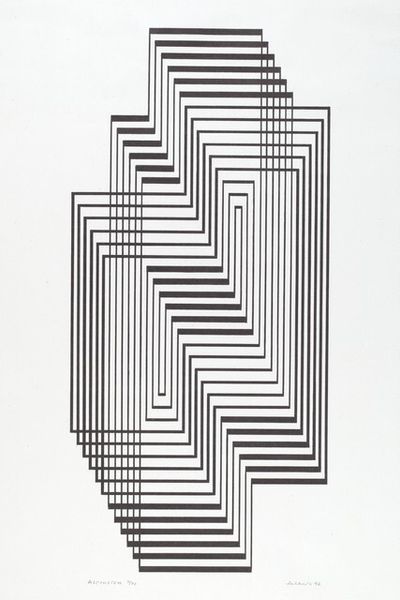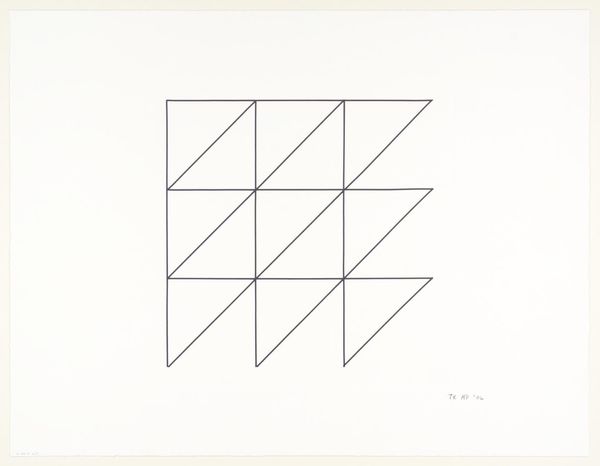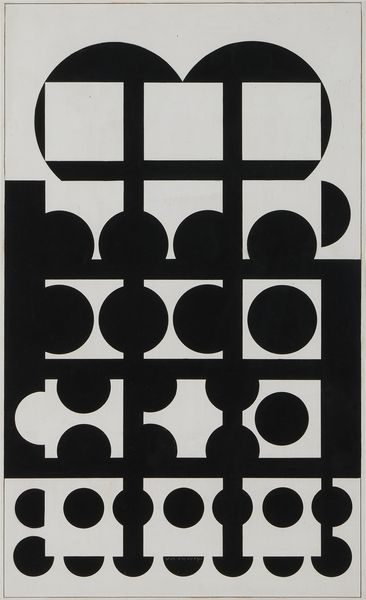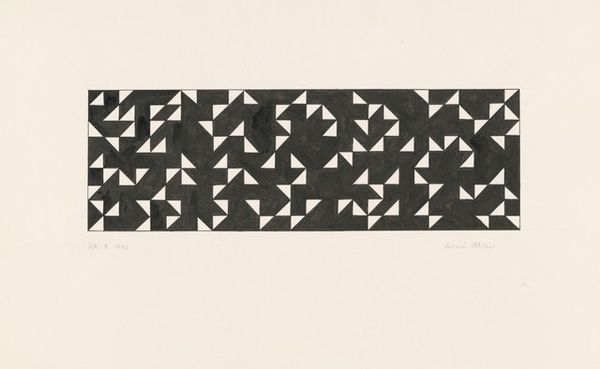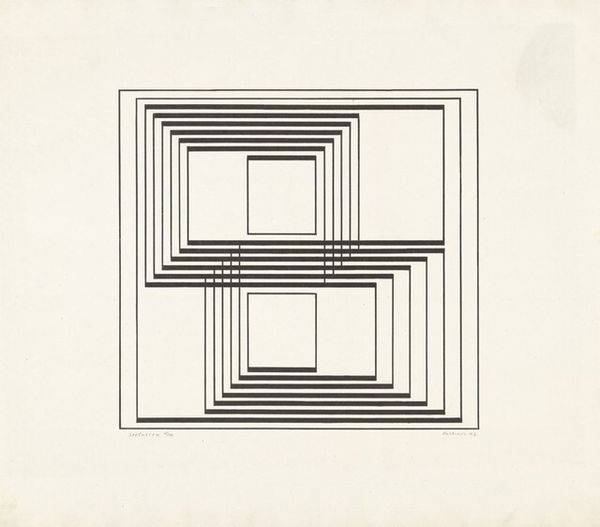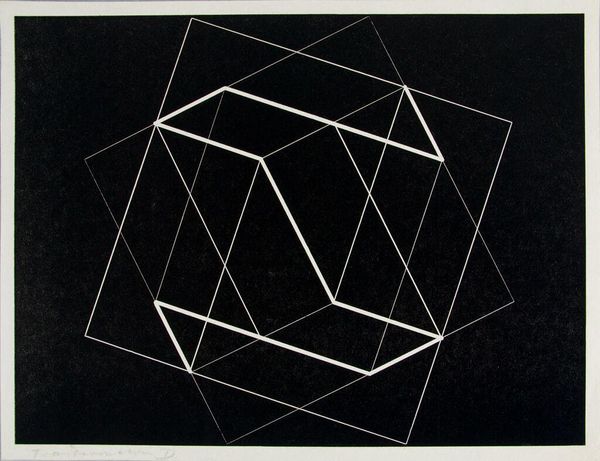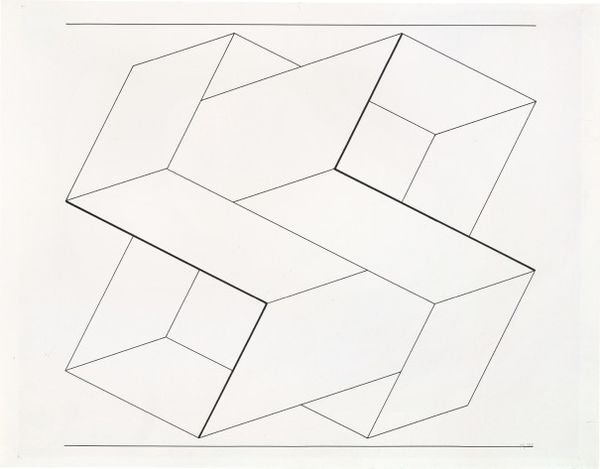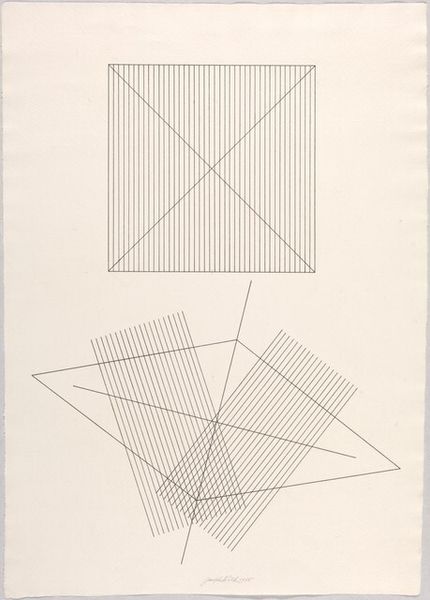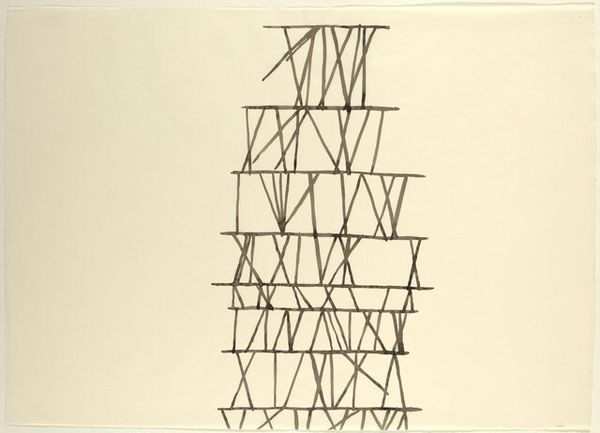
graphic-art
#
graphic-art
#
type repetition
#
conceptual-art
#
typographic composition
#
text art
#
hand drawn type
#
typography
#
text
#
geometric
#
embossed
#
calligraphic
#
geometric-abstraction
#
varying line stroke
#
tonal art
#
imprinted textile
Copyright: Bruno Munari,Fair Use
Curator: Here we have Bruno Munari's "Curva di Peano" created in 1975. Editor: My first impression is one of intricate constraint. There's this back-and-forth between what looks like open pathways, and the blockages. It feels like a maze, or even circuit board… Curator: That circuit board analogy is interesting given Peano curves are space-filling curves used in computer science. Munari, of course, wasn't merely thinking of algorithms; his work often circles back to how mathematical concepts permeate visual culture, encoding how we perceive space and form. The gray tonality adds another layer of depth here. Editor: True. Considering how this image might have been produced, it seems the varying line strokes indicate a manual print process. Maybe something akin to block printing, given the texture. If you consider the labor of carving and inking such a design versus simply generating it with code…there's a commitment to process here. Curator: Precisely. Looking at it through that lens changes everything. Each block and line takes on more weight; suddenly the image isn’t just a geometric abstraction, but an articulation of memory, with patterns mirroring earlier textile printing techniques as much as forecasting computational pathways. I keep coming back to how he brings this mathematical object into visual culture. Editor: Yes, thinking about materiality makes it all the more resonant, turning a conceptual form into a physical artifact that can endure over time. What do you think is the overriding mood of the work? Curator: I think there is something powerful in its blending of science, craft, and memory. It’s like Munari is charting a course, maybe our cognitive journey from the abstract to concrete. Editor: I see what you mean; perhaps Munari invites us to consider the ongoing impact that humans leave as makers, producers, and engineers.
Comments
No comments
Be the first to comment and join the conversation on the ultimate creative platform.

